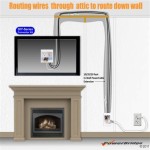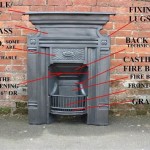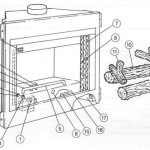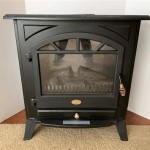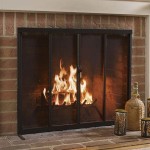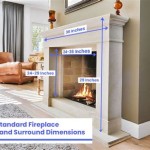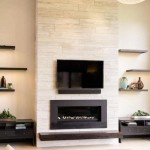Vented Fireplace Logs: Understanding the Technology and Benefits
Vented fireplace logs represent a popular and convenient alternative to traditional wood-burning fireplaces. They offer the aesthetic appeal of a natural fire without the associated mess, labor, and regulatory restrictions often involved in burning wood. These logs are designed to be used in conjunction with a properly vented fireplace system, hence the name, and utilize either natural gas or propane as their fuel source.
The fundamental principle behind vented fireplace logs involves burning gas within a ceramic or refractory log set. These logs are meticulously crafted to resemble real wood, often incorporating intricate details and textures to enhance the visual experience. The flames produced by the burning gas dance around the logs, creating a realistic and comforting ambiance. The venting system is crucial for safely expelling the byproducts of combustion, ensuring proper air quality within the living space.
Vented gas logs are not designed to be a primary heat source, although they do radiate some heat. Their primary function is aesthetic, providing the visual appeal of a fire. The amount of heat produced is generally less than that of a wood-burning fireplace or a vent-free gas log set. This distinction is important to understand when considering vented logs for a specific application.
Key Point 1: Components and Operation of a Vented Fireplace Log System
A typical vented fireplace log system comprises several key components, each playing a vital role in its safe and efficient operation. The log set itself is the most visible element, consisting of ceramic or refractory logs arranged to mimic a natural wood stack. Beneath the logs lies a burner, which is responsible for distributing the gas and creating the flames. A control valve regulates the gas flow, allowing for adjustments to the flame height and heat output. Finally, the venting system, typically a chimney or flue, removes exhaust gases from the fireplace and directs them safely outside the building.
The burner is specifically designed for the type of gas being used, either natural gas or propane. Using the incorrect burner for the gas type can be extremely dangerous and can lead to incomplete combustion, the production of carbon monoxide, and potential fire hazards. The control valve is often equipped with safety features, such as a thermocouple or pilot light, which will shut off the gas supply if the flame is extinguished unexpectedly. This safety mechanism prevents the buildup of unburned gas, mitigating the risk of explosions.
The venting system is arguably the most critical component of a vented fireplace log system. It must be properly sized and installed to ensure adequate ventilation. Obstructions or damage to the venting system can compromise its effectiveness, leading to the accumulation of dangerous gases within the home. Regular inspection and maintenance of the venting system are essential for safe operation. Professional chimney sweeps can inspect and clean the chimney to remove creosote buildup, debris, and any other obstructions that may impede airflow.
The operation of a vented fireplace log system is relatively straightforward. After ensuring that the gas supply is turned on, the pilot light is typically lit using a push-button igniter or a match. Once the pilot light is lit, the main burner can be activated, producing the desired flame. The flame height can be adjusted using the control valve to create the desired ambiance. When finished, the main burner is turned off, and the pilot light may be extinguished, depending on the homeowner's preference. Some homeowners prefer to leave the pilot light on for convenience, while others choose to extinguish it to conserve gas.
Key Point 2: Advantages and Disadvantages of Vented Fireplace Logs
Vented fireplace logs offer several advantages over traditional wood-burning fireplaces. One of the most significant benefits is convenience. Unlike wood-burning fireplaces, vented gas logs require no chopping, stacking, or hauling of wood. They also eliminate the mess associated with wood, such as ash, soot, and debris. With a simple flick of a switch or turn of a knob, a fire can be ignited, providing instant ambiance and warmth.
Another advantage of vented fireplace logs is their ease of maintenance. There is no need to clean up ash after each fire, and the risk of chimney fires is significantly reduced. Regular inspection of the venting system is still necessary, but the overall maintenance requirements are considerably less than those of a wood-burning fireplace. This makes vented gas logs an attractive option for homeowners who desire the aesthetic appeal of a fireplace without the associated hassle.
Vented fireplace logs also offer greater control over the flame and heat output. The control valve allows for precise adjustments to the flame height, enabling homeowners to create the desired ambiance and level of warmth. This level of control is not possible with a wood-burning fireplace, where the flame and heat output are dependent on the type and amount of wood being burned.
However, vented fireplace logs also have some disadvantages. One of the primary drawbacks is their lower heat output compared to wood-burning fireplaces or vent-free gas log sets. Vented logs are designed primarily for aesthetic purposes and are not intended to be a primary heat source. This can be a significant limitation for homeowners who are looking for a fireplace to provide supplemental heating.
Another disadvantage of vented fireplace logs is that they require a functioning chimney or flue. This can be a significant expense for homeowners who do not already have a suitable venting system in place. The installation of a chimney or flue can be costly and may require significant modifications to the home. Furthermore, vented gas logs are less energy-efficient than vent-free options since a significant portion of the heat generated is lost through the chimney.
The cost of operating vented fireplace logs can also be a factor. While the initial cost of the log set itself may be comparable to that of a wood-burning fireplace, the ongoing cost of gas can be significant, especially if the fireplace is used frequently. The price of natural gas or propane can fluctuate, impacting the overall cost of operation. Homeowners should consider the long-term cost of gas when making a decision about whether to install vented fireplace logs.
Key Point 3: Installation and Safety Considerations
The installation of vented fireplace logs should be performed by a qualified professional. Improper installation can lead to dangerous situations, such as gas leaks, carbon monoxide poisoning, and fire hazards. A qualified installer will ensure that the log set is properly sized for the fireplace, that the gas connections are secure, and that the venting system is functioning correctly.
Before installing vented fireplace logs, it is essential to have the chimney inspected by a professional chimney sweep. The chimney sweep will check for obstructions, damage, and creosote buildup, ensuring that the venting system is safe and effective. Any necessary repairs or cleaning should be performed before the log set is installed.
Gas leaks are a serious safety concern associated with vented fireplace logs. It is crucial to have a gas leak detector installed in the home to provide early warning of any potential leaks. Regular inspection of the gas connections is also recommended to ensure that they are tight and secure. If a gas leak is suspected, the gas supply should be immediately shut off, and a qualified professional should be contacted to investigate and repair the leak.
Carbon monoxide poisoning is another significant safety risk associated with vented fireplace logs. Carbon monoxide is a colorless, odorless gas that is produced during incomplete combustion. Exposure to carbon monoxide can be fatal. It is essential to have a carbon monoxide detector installed in the home to provide early warning of any potential buildup of carbon monoxide. Regular inspection and maintenance of the venting system are crucial for preventing carbon monoxide poisoning.
Proper ventilation is essential for the safe operation of vented fireplace logs. The venting system must be properly sized and installed to ensure that exhaust gases are safely removed from the fireplace and directed outside the building. Obstructions or damage to the venting system can compromise its effectiveness, leading to the accumulation of dangerous gases within the home. Never block or obstruct the venting system in any way.
It is also important to follow the manufacturer's instructions for the safe operation of vented fireplace logs. These instructions will provide specific guidance on how to light the pilot light, adjust the flame height, and turn off the fireplace. Failure to follow the manufacturer's instructions can lead to dangerous situations.
Finally, it is crucial to regularly inspect the log set for any signs of damage or deterioration. Cracks or breaks in the logs can affect their appearance and performance. Damaged logs should be replaced promptly to ensure safe and efficient operation. The burner should also be inspected regularly for any signs of corrosion or damage. A damaged burner can lead to incomplete combustion and the production of carbon monoxide.

Vented Gas Logs Heater Or Decorative Bart Fireside

Vented Gas Logs Freeman

Real Fyre R Golden Oak Vented Gas Log Set

Vented Gas Logs Natural And Propane

Napoleon Gl18e Vented Gas Log Set 18 Inch

American Gas Log Dundee Oak 30 In Vented Natural Fireplace Set With Complete Kit Manual Match Lit Do30hdmtch The Home Depot

Real Fyre 18 White Birch Vented Natural Gas Logs Set Match Light

Pleasant Hearth 18 Dual Fuel Wildwood Vent Free Gas Log Set 30 000 Bt

American Gas Log Cheyenne Glow 24 In Vented Natural Fireplace Set With Complete Kit Manual Match Lit Cg24hdmtch The Home Depot

Gas Log Sets For Vented And Vent Free Designs

